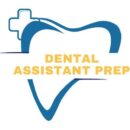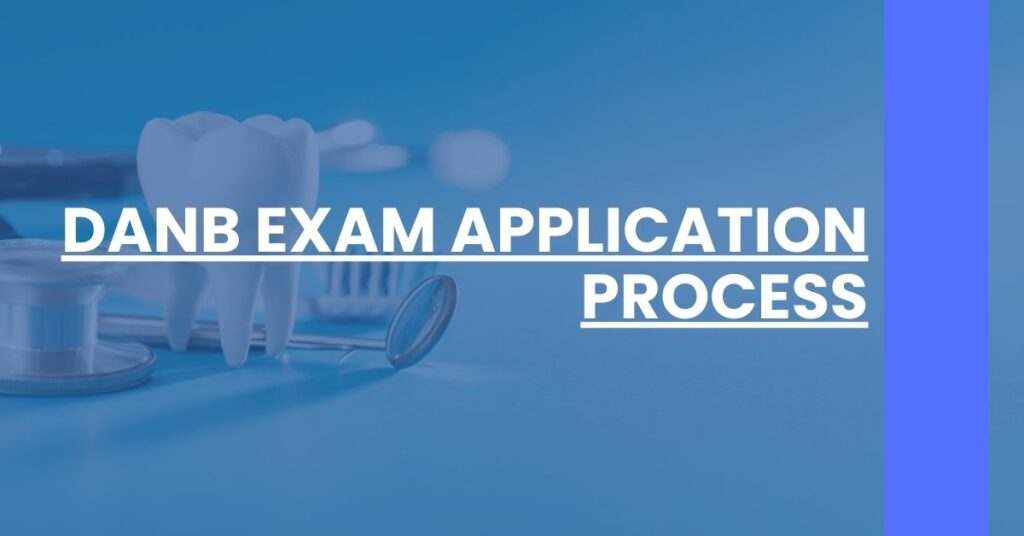Begin your journey with the DANB exam application process to achieve dental assisting accreditation.
- Eligibility Criteria: Understanding the prerequisites for DANB exams ensures a smooth start.
- Preparation Guide: Master the DANB exam content with comprehensive study materials.
- Exam Scheduling: Find convenience in selecting an exam date that suits your timeline with the DANB application.
Navigate the DANB exam application process confidently to elevate your dental career.
Understanding the DANB Exams
The Significance of DANB Certification
The Dental Assisting National Board is the pivotal credentialing organization for dental assistants. Holding a DANB certification can significantly impact your career as it is recognized across the United States. It attests to the holder’s knowledge and professional capabilities, often leading to enhanced job prospects, higher salaries, and increased job responsibilities.
Types of DANB Exams
DANB offers several exams catering to different areas of dental assisting:
- Certified Dental Assistant (CDA): The CDA exam is one of the most sought after and covers General Chairside Assisting (GC), Radiation Health and Safety (RHS), and Infection Control (ICE) components.
- Certified Orthodontic Assistant (COA): This includes the Orthodontic Assisting (OA) and ICE exams.
- Certified Preventive Functions Dental Assistant (CPFDA): Comprising four component exams: Coronal Polish (CP), Sealants (SE), Topical Fluoride (TF), and Topical Anesthetic (TA).
- National Entry Level Dental Assistant (NELDA): A stepping-stone certification for those starting out, consisting of Anatomy, Morphology and Physiology (AMP), ICE, and RHS exams.
Exam Details
Each exam is designed to evaluate your knowledge and skills in particular areas. For instance, the CDA exam is comprehensive and may require a more in-depth period of study and preparation.
Eligibility Criteria
Meeting the Requirements
Before you can sit for any DANB exam, you must meet specific eligibility criteria. These vary based on the exam and include:
- Education: Completion of a CODA-accredited dental assisting or dental hygiene program, or alternative education pathways as specified by DANB.
- Work Experience: Depending on the exam, a certain amount of work experience may be required if the educational prerequisite isn’t met.
- CPR Certification: Possession of a current CPR, BLS, or ACLS certificate from a DANB-accepted provider.
Specific Pathways to Eligibility
For certain exams like the CDA, DANB offers multiple paths to eligibility, accommodating various levels of education and experience. It is essential to carefully review the specific criteria for the exam you’re targeting.
The Application Process
Initiating the Application
To begin your journey towards DANB certification:
- Identify the Exam: Choose the exam that matches your qualifications and career goals.
- Collect Information: Gather all necessary personal and professional information.
- Complete the Application: Fill out the application form with attention to detail, ensuring all information is accurate and up-to-date.
Navigating Through Paperwork
The application requires careful attention as mistakes or omissions can delay your process. Make sure to:
- Verify personal details like your legal name, which should match your ID.
- Include your education and employment history.
Ensure you review all components of your application before submission to avoid any potential issues.
Required Documentation and Fees
Preparing Your Documentation
Required documentation will include, but is not limited to:
- Proof of education
- Employment verification
- Current CPR certification
Understanding the Fees
Each exam has an associated fee which varies. The RHS exam, for instance, costs $75, whereas the CDA exam costs $270 for traditional candidates.
Payment Methods and Policies
The DANB accepts several payment methods:
- Check
- Money order
- Credit card
Remember, fees are non-refundable, so ensure you’re prepared and committed before paying.
Scheduling Your Exam
Selecting Your Exam Date
Once your application is approved and you have paid your fees, scheduling your exam is the next step:
- Choose a Convenient Location: DANB offers numerous locations for testing; choose one that’s easy for you to travel to.
- Pick a Date: Schedule a date that allows you enough time to prepare but is close enough to maintain the momentum of your studies.
Flexibility and Rescheduling
If you encounter an unexpected conflict:
- Contact DANB as soon as possible to inquire about rescheduling policies.
- Take note that there might be fees associated with rescheduling, and there are typically cutoff dates for making changes.
Scheduling your exam date is a crucial step that solidifies your commitment to becoming a DANB certified dental assistant. It also gives you a clear timeline to structure your exam preparation around, so ensure you set aside adequate time to review and feel confident on test day.
Preparation Tips for the Exam
Crafting a Study Plan
A solid study plan is a cornerstone of successful exam preparation. Structure your study schedule over several weeks or months, depending on your comfort level with the material and the complexity of the exam.
- Set Clear Objectives: Determine what you need to study and assign specific topics to each study session.
- Regular Review: Consistently review previously studied material to reinforce knowledge retention.
- Practice Tests: Use practice tests from the DALE Foundation to simulate the exam experience.
Utilizing Recommended Study Materials
DANB provides candidates with a list of recommended study materials and resources to prepare for the exams, including textbooks and online practice questions. Additionally, the DALE Foundation, the official DANB affiliate, offers interactive study aids and review courses.
- Official Textbooks: Invest in the official textbooks that cover the detailed content outlined for each exam.
- Online Resources: Engage with online modules and courses to reinforce your learning.
- Group Studies: Consider joining a study group to review challenging concepts and share study strategies.
Time Management for Effective Studies
Balancing work, personal commitments, and studies can be challenging. Here are some tips for effective time management:
- Dedicated Study Time: Block out specific times of your week strictly for studying, and treat these blocks as non-negotiable appointments.
- Prioritize Weak Areas: Focus more on sections where you feel less confident to boost your overall exam readiness.
- Short Study Sessions: Brief, focused study sessions can be more productive than marathon ones, reducing burnout and increasing retention.
Understanding Exam Format and Content
Familiarizing Yourself with the Exam Layout
Understanding the structure of the DANB exams eases anxiety and helps you manage time during the test effectively:
- Question Types: Expect multiple-choice questions that target theoretical and practical aspects of dental assisting.
- Section Breakdown: Each component of the exam, such as GC, RHS, or ICE, focuses on a specific knowledge area. Go through the exam outlines to familiarize yourself with the format.
Analyzing Content Areas
Dive deep into each content area that your exam will cover. This step ensures no surprises on exam day:
- Clinical Applications: Understand procedures and protocols for patient care and dental office operations.
- Radiology Proficiency: For the RHS, you should have comprehensive knowledge of radiographic equipment and safety measures.
- Infection Prevention: Infection control protocols and adherence to health regulations are typically emphasized across DANB exams.
The Day of the Exam
Preparing for Exam Day
Make the actual exam day a smooth process by preparing well in advance:
- Documentation to Bring: Ensure you have the correct identification as required by the DANB, which matches the name on your application.
- Understand Test Center Rules: Familiarize yourself with the venue’s policies, such as what items you can take into the test center and breaks during the exam.
During the Exam
On test day, approach the exam calmly and confidently:
- Time Management: Allocate time to each section efficiently, ensuring you have enough time for review.
- Read Questions Carefully: Take your time to read through each question thoroughly before selecting an answer.
- Mark and Review: Use the mark and review feature for questions you’re uncertain about and revisit them after you’ve answered all others.
Post-Exam Protocol
After the completion of the exam, be clear on what immediate steps need to be taken:
- Exam Materials: Hand in all required materials as instructed by the test administrator.
- Awaiting Results: Before leaving, confirm the process for receiving your exam results and any post-exam surveys or feedback forms to be filled out.
After the Exam: Results and Next Steps
Receiving Your Results
The anticipation of receiving results is significant, and understanding the process can reduce anxiety:
- Results Delivery: Find out if you will receive your results immediately after the exam or if they will be mailed to you at a later date.
- Score Interpretation: Learn how to interpret your score and what constitutes a passing mark. The passing score for DANB exams is typically a scaled score of 400 or higher.
In Case of an Unsuccessful Attempt
If the outcome isn’t as desired, it’s important to know the next steps:
- Retake Policy: Get information on how soon you can retake the exam and any associated fees or additional study recommendations.
- Review and Reflect: Identify areas of weakness and seek additional study materials or support in preparation for your next attempt.
Path Forward After Passing
On passing the exam, the process of becoming certified and maintaining that certification begins:
- Certification: Understand the procedures for receiving your official certification and any subsequent registration with regulatory bodies.
- Continuing Education: Begin looking into continuing education opportunities to ensure you meet DANB’s recertification requirements.
Renewal and Continuing Education
The Importance of Certification Renewal
Maintaining active certification is crucial and requires yearly attention:
- Annual Renewal: Be aware of the renewal process and deadlines to keep your credentials active without interruption.
- Renewal Fees: Set reminders for the nonrefundable renewal fees that must be paid each year.
Continuing Education Requirements
As a dental professional, continued learning is an integral part of your career growth:
- Accruing Credits: DANB requires a set number of continuing education credits for renewal. These can be pursued through online courses, workshops, or additional certifications.
- Record Keeping: Maintain records of all your educational activities. While DANB may not require them during renewal, thorough documentation is vital for potential audits.
Strategies for Meeting CE Requirements
Here’s how you can meet your continuing education needs efficiently:
- Plan Ahead: Proactively identify and undertake relevant educational opportunities that align with your long-term career plans.
- Diverse Learning: Utilize diverse educational resources, such as the DALE Foundation’s courses, to make learning enjoyable and applicable to your practice.
Conclusion: Navigating Your Dental Assisting Future
Your journey toward becoming a certified dental assistant is filled with opportunities for growth and professional development. The DANB exam application process is a structured path that showcases your commitment and expertise in the dental assisting field. With thorough preparation, attention to detail, and a proactive approach to learning and certification maintenance, you are well on your way to reinforcing your knowledge and elevating your career within the dental community. The steps outlined in this guide are designed to provide you with a clear roadmap, instilling confidence in your ability to excel as a dental assistant. Embrace the challenge, confident in the knowledge that every step you take is progressing you further in your chosen profession.

